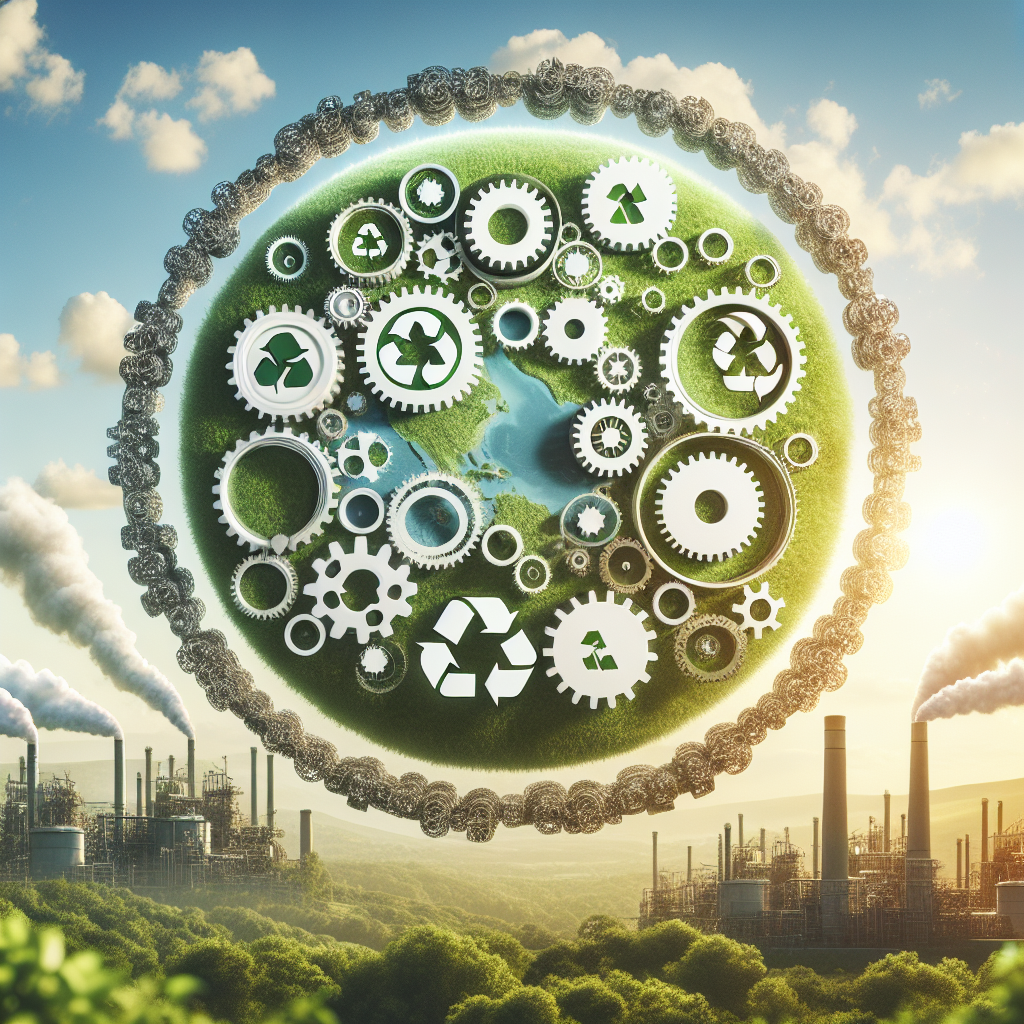The Circular Economy: A Model for Reducing Waste and Carbon Emissions
In an era where the sustainability of our planet is of paramount concern, the circular economy emerges as a transformative model for environmental conservation, waste reduction, and carbon footprint minimization. Unlike the traditional linear economy that follows a ‘take-make-dispose’ pattern, the circular economy is regenerative by design, aiming to retain as much value as possible from products, parts, and materials. This approach offers a pathway to sustainable economic growth that works in harmony with our natural ecosystems, rather than against them.
Understanding the Circular Economy
At its core, the circular economy is about rethinking and redesigning the way we produce, consume, and dispose of goods. It is built on three foundational principles: designing out waste and pollution, keeping products and materials in use, and regenerating natural systems. This model encourages the use of renewable energy sources, emphasizes the use of biodegradable materials, and promotes recycling and upcycling to extend the lifecycle of products.
Impact on Waste Reduction
The implementation of circular economy principles significantly impacts waste reduction. By maximizing the reuse, refurbishment, remanufacturing, and recycling of products and materials, the amount of waste sent to landfills and incinerators is drastically reduced. This is not only beneficial for the environment but also fosters innovation in product design and service delivery, creating new business models and opportunities.
Carbon Emissions and the Circular Economy
The interconnection between waste and carbon emissions is undeniable. Waste management processes such as landfilling and incineration are significant sources of greenhouse gases. By diverting waste from landfills and reducing the demand for new materials, the circular economy plays a crucial role in decreasing carbon emissions. Furthermore, by encouraging the use of renewable materials and energy, it aids in the transition towards a low-carbon economy.
Implementing the Circular Economy
Transitioning to a circular economy requires the concerted effort of governments, businesses, and individuals. Policymakers can support this shift through regulations and incentives that promote circular practices. Businesses, on their part, need to innovate and adopt sustainable business models, while consumers can contribute by making more sustainable choices in their daily lives.
Challenges and Opportunities
The journey towards a circular economy is not without its challenges. These include overcoming the inertia of established linear economy practices, the need for substantial investment in new technologies and infrastructure, and the requirement for a cultural shift in consumer behavior. However, the opportunities outweigh these challenges significantly. The circular economy not only has the potential to reduce environmental degradation but also offers economic benefits through new jobs and innovation, alongside contributing to societal well-being.
The Role of Technology
Technology plays a pivotal role in enabling the circular economy. Innovations in material science, digital technologies (such as IoT and blockchain), and biotechnology are crucial for developing the processes and products that make circular systems viable. These technologies can improve product tracking, material sorting, and the efficiency of recycling processes, among other benefits.
Global Examples
Globally, numerous examples illustrate the successful implementation of circular economy principles. The Netherlands aims to be 100% circular by 2050, with strategies focusing on sectors such as biomass and food, plastics, manufacturing, and construction. Similarly, Finland has integrated circular economy goals into its national agenda, with initiatives designed to make the country a circular economy leader by 2025.
Conclusion
The circular economy presents a compelling model for sustainable growth, offering a systemic approach to addressing some of the most pressing environmental challenges of our time. By designing out waste, keeping products and materials in use, and regenerating natural systems, it provides a blueprint for a more resilient and sustainable world. As we move forward, embracing the principles of the circular economy will be critical in our collective efforts to reduce waste, lower carbon emissions, and ensure the well-being of our planet for future generations.
FAQs
Q: What is the difference between a circular economy and recycling?
A: While recycling is a component of the circular economy, the circular model encompasses a broader range of practices aimed at extending the lifecycle of products, such as reuse, repair, and remanufacturing, and not just recycling.
Q: How does the circular economy create jobs?
A: The circular economy creates jobs through new business models and industries focused on sustainable practices, such as repair services, remanufacturing, recycling, and the development of innovative materials and technologies.
Q: Can the circular economy be applied to all industries?
A: Yes, the principles of the circular economy can be applied across all industries, though the specific strategies and practices may differ depending on the sector, materials involved, and product lifecycles.
Q: How can individuals contribute to the circular economy?
A: Individuals can contribute by adopting more sustainable consumption habits, such as choosing products designed for longevity, repairing instead of discarding items, buying second-hand goods, and recycling properly.
Q: Is the circular economy more expensive than the linear economy?
A: While some circular practices may require upfront investment, in the long term, the circular economy can lead to savings through reduced material costs, energy efficiency, and waste reduction. Additionally, it creates economic opportunities and can lead to more stable prices for commodities by reducing dependence on raw materials.

